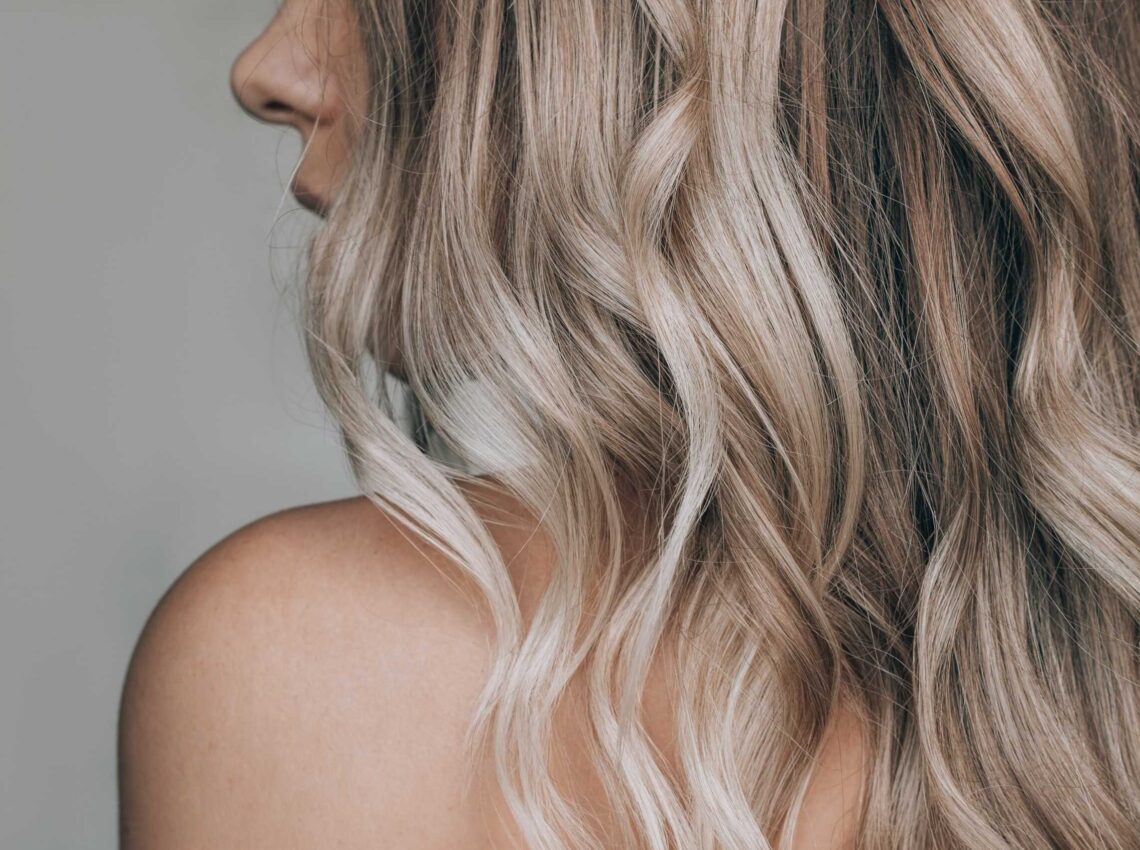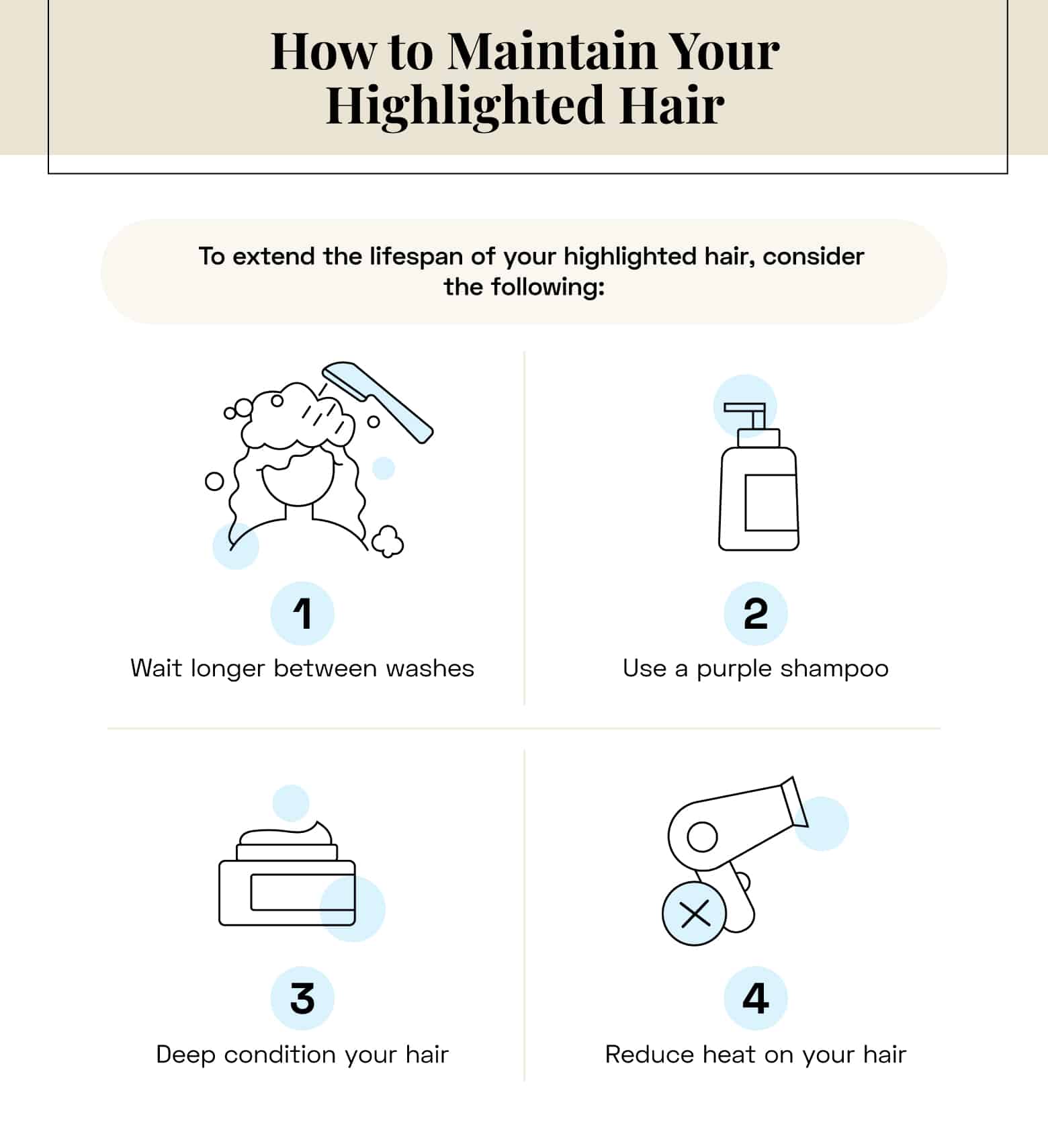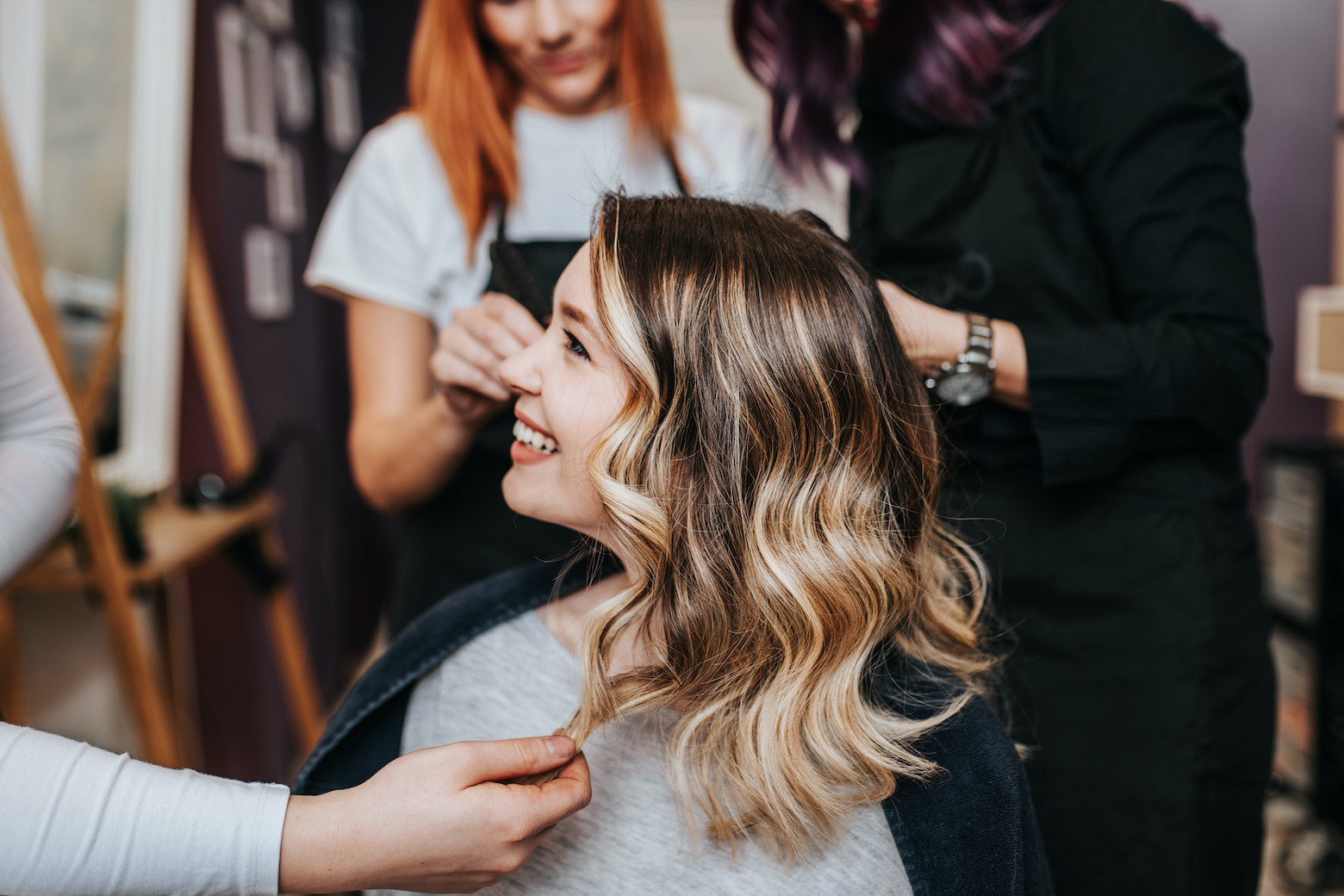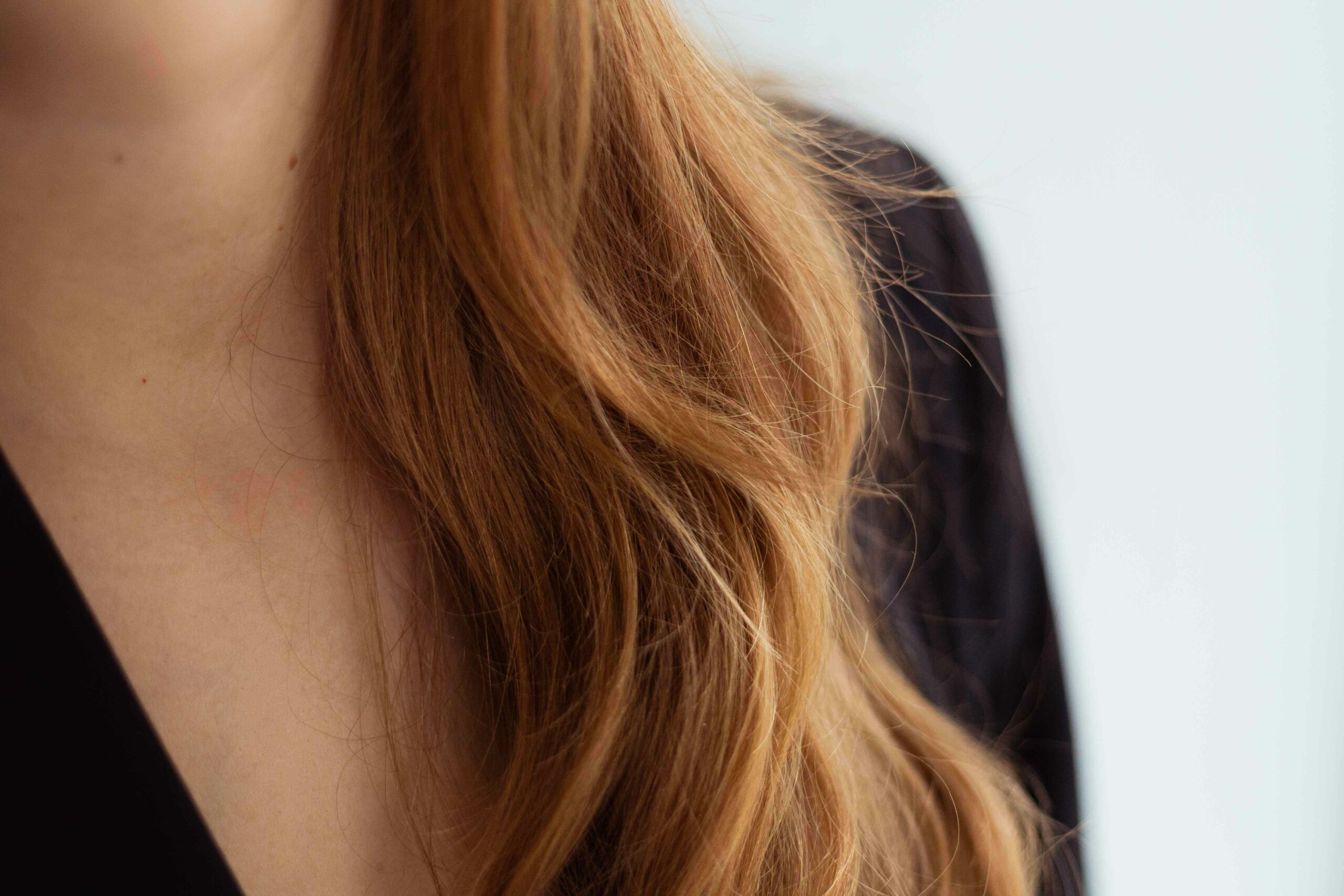How to Disguise Gray Hair with Highlights & Other Techniques

Going gray is a part of life — it happens to all of us. Whether you just found a few gray hairs or you’ve been gray for a while, it can be hard to accept the change in your natural hair color. Luckily, there are ways to disguise gray hair with highlights and without!
In this post, we go over all the ways to hide your silver strands, from blending grays with highlights to demi-permanent color treatments and more.
Ways to Disguise or Blend Your Gray Hair
How you cover silvery strands depends on what you’re going for. For example, do you want a low-maintenance hairstyle, or can you commit to a little extra hair care in your routine?
If you’re concerned about gray roots, you can address that with root touch-ups. Highlights treat small patches of gray, while all-over color treats more extensive graying, including at the hairline. If you’re feeling ready to embrace your grays, root-blending techniques can help you transition colors between your natural shade and natural grays more subtly.
Also, keep in mind that how gray hair looks varies from person to person. It depends on your base hair color, if it’s light or dark, and how fast or slow your grays are coming in. If you have blonde hair, you might find it easier to hide gray hair with blonde highlights. Having dark brown, red, or black hair means you’ll be dealing with more of a contrast.
No matter what your personal hair situation is, there’s a method out there to effectively hide your grays. Read on to find the right one for you!
1. Blend Gray Hairs with Highlights or Babylights
Getting highlights means your hairstylist lightens sections of your hair from root to tip, usually using foils. Blending gray hair with highlights works by lightening the areas around the hairs, so there’s less of a contrast. You can get all-over highlights that blend your grays without having to worry about finding and lightening every single gray strand.
Babylights are smaller highlights. They’re done to give your hair a sun-kissed look, similar to balayage. If you’re just starting to go gray or have fewer grays, these small highlights might be enough to blend them in.
Considerations for this method:
- This works best with all hair colors, but especially with naturally blonde hair. If you have naturally darker hair, it might take additional salon sessions to get to a lighter color all over that disguises your grays.
- Both highlighting methods require frequent maintenance, with touch-ups about every four to six weeks.
2. Blend Gray Hairs with Balayage
Balayage is a freehand highlighting technique. Since the colorist chooses where and how much to lighten certain parts, the treatment is more customizable.
If you have larger areas of gray or dark hair that you don’t want to lighten drastically, balayage can give you more control over the shade you get and your overall look. Similar to how you disguise gray hair with highlights, hair lightened with balayage helps grays blend in or be toned over. However, since balayage doesn’t start at your roots, your stylist will need to dye your roots to their natural color to cover the grays as they grow out.
This treatment is a good way to prevent any harsh demarcation lines in your hair color as you experience regrowth. Since the stylist is using a freehand technique, it’s also more subtle and natural looking.
Considerations for this method:
- This also works with all hair colors but may be an especially good option if you have larger sections of gray or dark hair.
- Balayage should be touched up every 12 to 14 weeks. However, your stylist will need to touch up your roots between balayage services, typically every 4 to 8 weeks.
3. Add Dimension or Transition to Gray with Lowlights
Lightening your hair can help with grays, but did you know that darkening it can, too? Lowlights are like the opposite of highlights — areas of hair that are dyed a shade or two darker than your natural color, which gives your hair more dimension.
Lowlights can help you cover grays or transition to it more naturally. The lighter color of the gray alongside the darker lowlights can bring out the gray color in a subtle way.
Considerations for this method:
- This works best with all hair colors but especially for those with dark blonde or brown hair as well as redheads. If you have really dark hair, it may be difficult to find a darker color that will add dimension.
- It’s a good technique if you only have small sections of gray or if you want to transition your hair to gray.
- This treatment is typically more low maintenance than highlights, only needing touch-ups every six to eight weeks.
4. Cover Gray Hair with Single-Process Color
If you want to completely cover your gray hair and maintain your natural hair color, you might want to go for a single-process hair dye or root touch-up. These treatments are called “single-process” because they’re done in one step. Generally, they can give you full gray coverage.
Permanent dye and bleach last the longest, up to four to six weeks, but you can try temporary, semi-permanent, or demi-permanent dye to see how you like the look or change things up more often.
Considerations for this method:
- All over color works for all hair colors, but keep in mind that root touch-ups will be needed.
- Touch-ups are recommended every four to eight weeks.
5. Use a Glaze or Gloss for Temporary Coverage
Another type of color treatment, hair glaze, coats the outside of the hair strands and lasts for about a week. It’s meant to increase shine and enhance or alter hair tone, helping to reduce brassy or dull tones.
Gloss is different from glaze in that it penetrates the hair cuticle and lasts for about four weeks. It can change the color of your hair strands, making it a good short-term option for covering gray.
Considerations for this method:
- Glaze and gloss work for all hair colors, including natural or colored hair. They don’t last very long, but they can refresh your current hair color, tone out brassiness, or give you a tinted color.
- Glaze lasts one to two weeks.
- Gloss lasts three to four weeks.
How to Maintain Your Highlighted Hair
Any color treatment needs to be touched up from time to time. But there are ways to make your results last. Here are some tips to maintain your highlighted hair between trips to the salon — and to maintain your hair health in general.

- Wait longer between washes: Washing your hair less frequently is a good way to make your color last longer because washing strips the color. Wait two to four days between each wash if you have fine hair, and five to ten days between washes if you have thicker hair.
- Use a purple shampoo: Violet pigments help you maintain the tones of lighter colors, including blonde, silver hair, and grays, preventing your strands from looking yellow and brassy or dull.
- Deep condition your hair: Deep conditioning keeps your hair moisturized, which is especially important after a harsh chemical process like highlighting. Moisturized hair is also less prone to breakage than dry hair.
- Reduce heat on your hair: In addition to promoting dryness and breakage, using heat on your hair can also fade your color faster. If you prefer heat styling, be sure to use heat protection on your hair, too.
Which Option Is Right for You?
The best way to cover your grays really depends on your personal hair needs and the look you want to achieve.
- Highlights or babylights might be right for you if you’re dealing with minor to moderate graying and want to go for a lighter color, especially if you already have light hair.
- Balayage is a good choice if you’re dealing with patches or larger areas of grays, and you want a more customizable look.
- Lowlights might be a good choice if you have dark hair and want to go darker or are ready to transition to gray naturally.
- Single-process color could be the treatment for you if you just want to eliminate your grays entirely.
- Glaze or gloss might be a good option if you want to improve the tone of your natural or color-treated hair, though they might work best in combination with another treatment.
Whether you’re ready to embrace your grays or want to keep your natural hair color seamless, StyleSeat can help you find the best stylist for your needs. Even if you aren’t sure what look or treatment you want to go with, consulting with a StyleSeat Pro can help you find the best treatment for the look you want to achieve.



